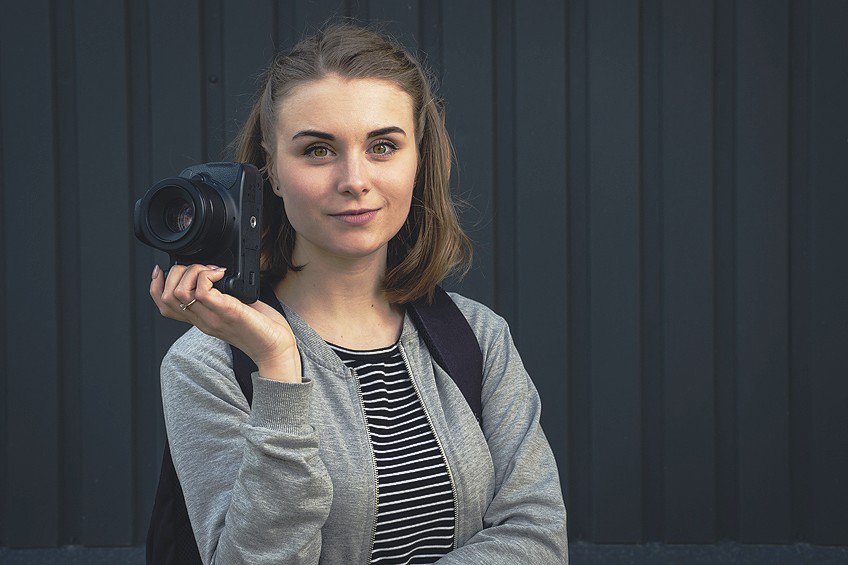Famous Female Photographers – Shattering Glass Ceilings
The majority of art education literature and resources tend to focus more on the prolific achievements of male artists commonly associated with the phrase, “the old masters”. This form of entrenched patriarchy in art education and history has luckily been revised throughout the recent decade to include a more diverse and accurate representation of the old masters by making sure that women in art are more seen and heard than they have been in the past. In this article, we will introduce you to the top 16 most famous female photographers in art history, whose works are considered the new masters of Contemporary photography. We will also cover a brief history of women in the field of photography that will give you a full picture of the medium and its application by female photographers. Read on for more about the most important female photography practitioners in art history!
Contents
- 1 Women in Photography
- 2 The Top 16 Most Famous Female Photographers of All Time
- 2.1 Sarah Anne Bright (1793 – 1866)
- 2.2 Julia Margaret Cameron (1815 – 1879)
- 2.3 Franziska Möllinger (1817 – 1880)
- 2.4 Dorothea Lange (1895 – 1965)
- 2.5 Marie Al-Khazen (1899 – 1983)
- 2.6 Tsuneko Sasamoto (1914 – 2022)
- 2.7 Diane Arbus (1923 – 1971)
- 2.8 Graciela Iturbide (1942 – Present)
- 2.9 Annie Leibovitz (1949 – Present)
- 2.10 Rita Ostrovska (1953 – Present)
- 2.11 Nan Goldin (1953 – Present)
- 2.12 Cindy Sherman (1954 – Present)
- 2.13 Pamela Hanson (1954 – Present)
- 2.14 Pamela Singh (1961 – Present)
- 2.15 Lynsey Addario (1973 – Present)
- 2.16 Chen Lingyang (1975 – Present)
- 3 Frequently Asked Questions
Women in Photography
Throughout art history, the representation of women has been significantly lower in terms of publicity and the inclusion of women in art history literature. The development of photography was officially seen in the 19th century, but one can also acknowledge its early forms of image production through the development of camera obscura methods. The term “camera obscura” translates to “dark room” and refers to an image projection system where light enters a dark space through a small aperture to generate an image.
The Chinese philosopher Mozi mentioned a device of the Han period that reflected a similar purpose of collecting rays of light.
Figures such as Leonardo da Vinci later wrote more about the camera obscura in his Codex Atlanticus (1502), which described the process of image production as illuminating a place or landscape with the sun and drilling a small hole in a room wall facing the illuminated object. The illuminated objects or subject will send the image through the aperture and will result in an upside-down image on the opposite wall to the wall with the hole. It was then in 1822 when Nicéphore Niépce invented a method called heliography, which was used to produce the oldest surviving photograph in the world known as View from the Window at Le Gras (1827).
The heliography technique was derived from the theories proposed by previous inventors and artists, which led to the further development of processes such as the daguerreotype, named after Louis Daguerre who was Niépce’s business partner. While it is unclear as to how early forms of photography were first conceived or imagined, it is clear that the process of observation of the environment plays a huge role in invention. During the 19th century, the patriarchy ran rampant around the world, as history often described it and the roles of women in society were confined to domestic spaces with a handful of women in European and Western societies slowly adopting practices and careers dominated by men.
The history of men in art is long-winded and oversaturated. For an individual to be invested in a career such as photography or a technical hobby, one does not have to meet specific criteria in terms of what sexual orientation one has to be to practice photography.
Some of the earliest female photographers have been documented as early as 1839 with figures such as Sarah Anne Bright and Constance Fox Talbot. The majority of early women photographers also originated from European countries with late-19th-century female photographers documented in the United States, Malta, New Zealand, Turkey, Lebanon, Japan, Argentina, and Canada.
The Female Gaze
Women have been involved in photographic careers and artistic practices alongside many male artists and photography professionals across the world since the formal introduction of photography in European society. Due to the patriarchal lens through which many male artists have produced images from the male perspective, there has been an oversaturation of male-gaze-dominated imagery, which co-existed with other problematic relationships when it came to the way that men viewed women in society. The male gaze is often associated with the objectification of women and is often featured in art history as paintings and images of naked women created through the stereotypes invented by men and projected onto women in the form of societal roles.
The female gaze is one aspect of artistic observation that has not been thoroughly explored. The female gaze focuses on the observations of women or femme-identifying individuals across the world and the production of imagery that reflects women’s unique experiences. By re-examining art histories from a female gaze point of view, one can expect to learn new angles of the world that were previously left underrepresented.
The Top 16 Most Famous Female Photographers of All Time
One can never have too many angles of observation when it comes to art history and it would be a form of self-disservice to simply not investigate it. Below, we will dive into the top 16 most famous female photographers of all time whose works provide valuable personal histories from which women see and experience the world.
Sarah Anne Bright (1793 – 1866)
| Name | Sarah Anne Bright |
| Date of Birth | 1793 |
| Date of Death | 1866 |
| Nationality | English |
| Associated Movements, Themes, and Styles | Victorian photography and botanical photography |
| Mediums | Photography |
| Famous Artworks | ● The Quillan Leaf (Leaf and stem of Common Meadow Buttercup, Ranunculus Acris) (n.d.) |
Sarah Anne Bright was one of the first female photographers from the 19th century who is most famous for The Quillan Leaf photogram, which was initially miscredited to William Henry Fox Talbot. In 2015, it was discovered that the initials on the photogram belonged to Sarah Anne Bright who also produced watercolor paintings.
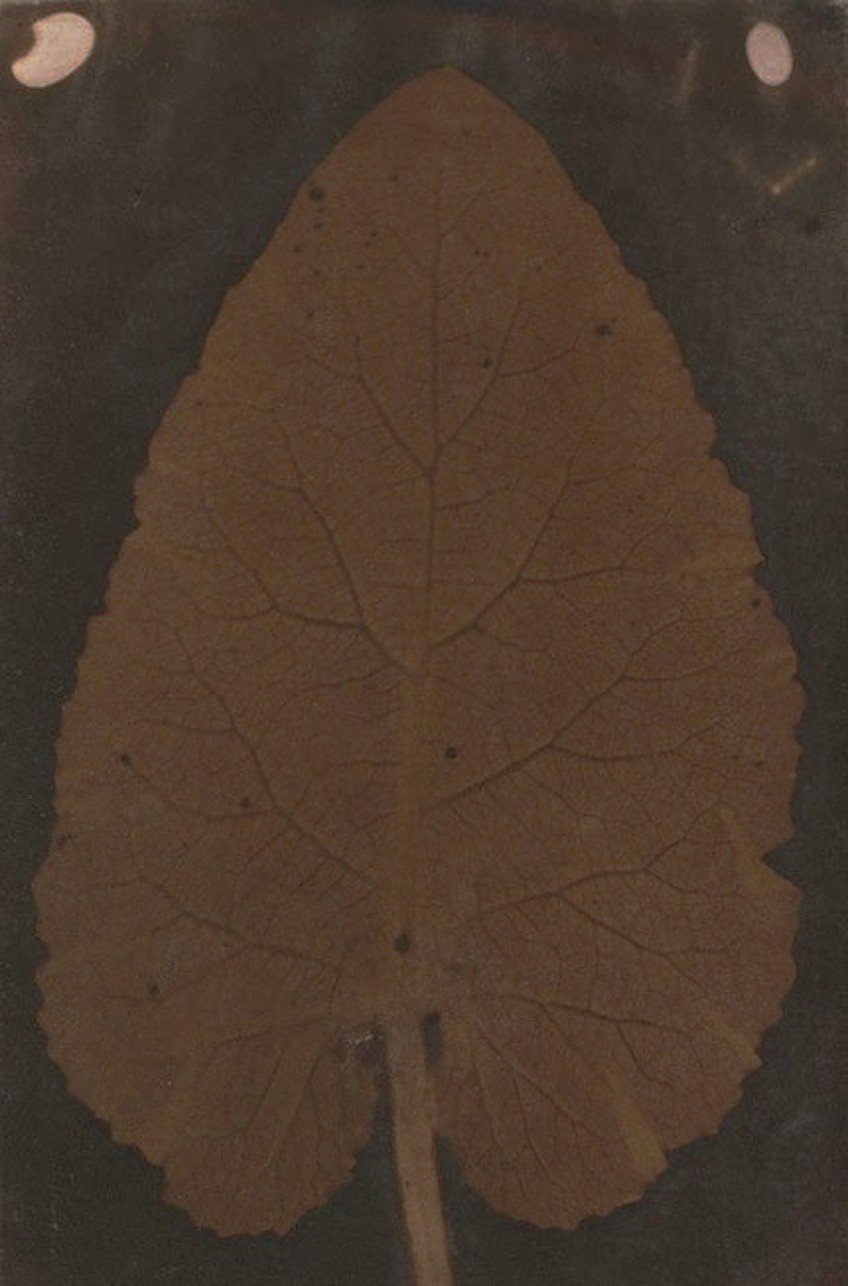
Bright was one of nine children and her father, Richard Bright, was also recognized as a wealthy banker and science enthusiast. Bright’s photography career was founded on a series of images called the Quillan collection, which was assembled by private photography dealer Jill Quasha and offered on auction at Sotheby’s in 2008. Bright is credited with being one of the first known female photographers of the early 19th century with her image of a leaf reflective of botanical documentative photography.
Julia Margaret Cameron (1815 – 1879)
| Name | Julia Margaret Cameron | |
| Date of Birth | 11 June 1815 | |
| Date of Death | 26 January 1879 | |
| Nationality | British | |
| Associated Movements, Themes, and Styles | Victorian portraiture, mythology, Christianity, religious art, staged photography, allegory, and illustrative photography | |
| Mediums | Photography | |
| Famous Artworks | ● Ellen Terry (1864) ● Queen Esther before King Ahasuerus (1865) ● Alice Liddell (1872) ● Maud “There has Fallen a splendid Tear From the Passion Flower at the Gate” (1875) | |
Julia Margaret Cameron was a pioneer of early photography and was recognized as one of the best women photographers of the 19th century. Cameron specialized in portraiture photography and was an expert illustrative photographer whose works reflected her interest in religious iconography, phrenology, Victorian life, and literature. Among her works are images that illustrate the nuanced lives of Victorian society that are not as rigid as often portrayed. Cameron’s style was led by her soft-focus approach to portraiture, which captured the sensitivity of men, women, and children while also recreating characters from mythology and Christianity.
Cameron suffered over seven illnesses in her lifetime and gained acquaintance with the British astronomer Sir John Herschel during her trip to the Cape of Good Hope in South Africa to recover from her illnesses, as was the custom for many India-based Europeans.
Cameron was a well-known Anglo-Indian hostess who was married to the jurist Charles Cameron. Cameron’s early career in photography developed in the mid-19th century after receiving a sliding-box camera as a gift from her daughter to keep her busy while her husband was occupied in Ceylon.
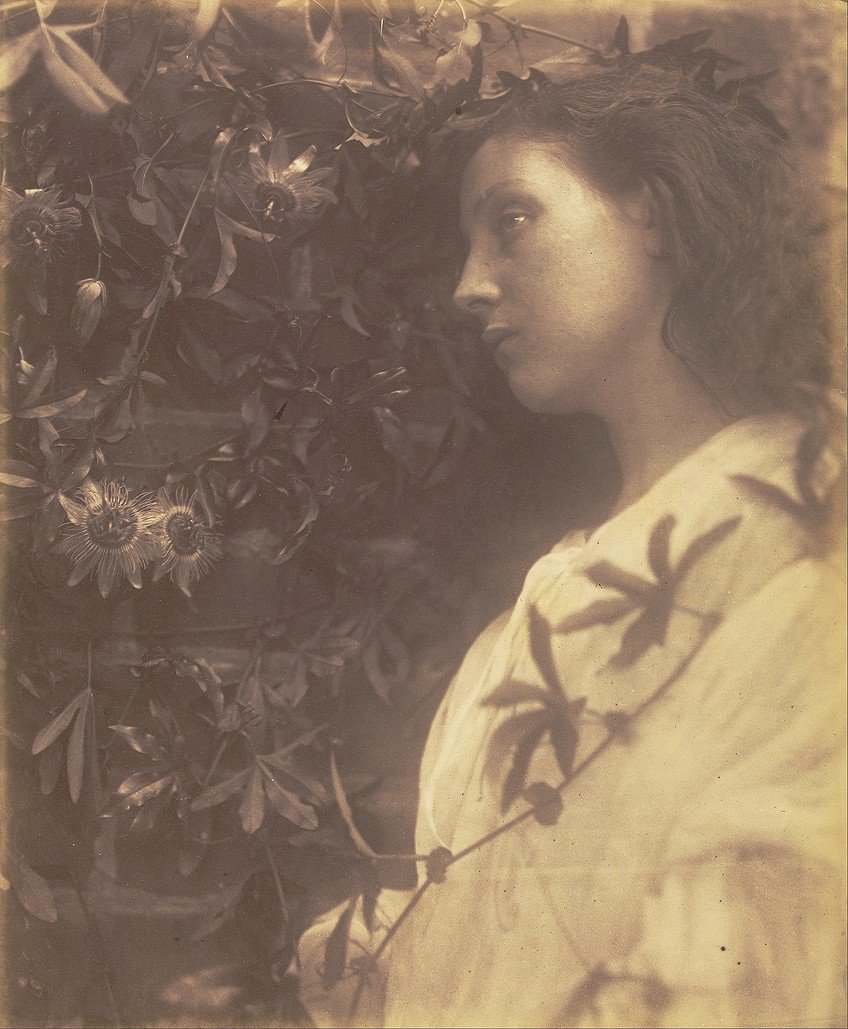
Cameron converted her coal house into a darkroom and her fowl house into her studio where she began her experimentations. By 1864, she was elected into the Photographic Society of London where her work was exhibited annually. The following year in 1865, Cameron joined the Photographic Society of Scotland and later held her first solo exhibition where she sold many prints. Her work was also acquired by the Victoria and Albert Museum as she earned well from her partnership with P. & D. Colnaghi and English agent William Spooner. Over her 12-year career, Cameron produced roughly 900 photographs.
Franziska Möllinger (1817 – 1880)
| Name | Louise Franziska Möllinger |
| Date of Birth | 1817 |
| Date of Death | 1880 |
| Nationality | German-Swiss |
| Associated Movements, Themes, and Styles | Landscape art, townscapes, natural landscapes, portraiture, and family portraits |
| Mediums | Photography and lithography |
| Famous Artworks | ● Verena Schlucht (1844) ● Oberer Reichenbach (1844) ● Faulhorn (1844) ● Aarmühle (1844) |
Franziska Möllinger was credited with being the first female photographer in Switzerland who was also the first to create daguerreotypes. Her unique status as such made her stand out from the male-dominated practice of photography in the 19th century and she also produced many landscape prints of her work through lithography printmaking. By the mid-19th century, Möllinger had already published four of her lithograph images that were developed at her studio in Solothurn.

In 1844, she also released her first publication in German called Daguerreotypirte Ansichten der Hauptstädte und der schönsten Gegenden der Schweiz – Vues daguerréotypées des villes capitales de la Suisse ainsi que des contrées les plus intéressantes de ce pays, which was a seminal move in her career. It was believed that she possibly died from mercury poisoning due to the photographic processes involving mercury, which affected her health and resulted in her passing in 1880. Among her best works are her townscape images and various natural landscapes captured in lithograph prints, which remind one of the traditional Chinese landscape portraits.
Dorothea Lange (1895 – 1965)
| Name | Dorothea Lange |
| Date of Birth | 26 May 1895 |
| Date of Death | 11 October 1965 |
| Nationality | American |
| Associated Movements, Themes, and Styles | Modern art, Documentary photography, portraiture, the Great Depression, and social change |
| Mediums | Photography |
| Famous Artworks | ● White Angel Bread Line, San Francisco (1933) ● Policeman on Street, San Francisco (1934) ● Human Erosion in California (Migrant Mother) (1936) ● Damaged Child, Shacktown, Elm Grove, Oklahoma (1936) ● Six Lettuce Pickers (1965) |
A strong believer in the power of photography for social change, American photographer Dorothea Lange was one of the most famous Modern photographers of the 19th and early 20th centuries. Lange’s career in photography follows the documentative path, which was also accompanied by her portraiture phase in the first quarter of the 20th century, in San Francisco. Lange’s best work is seen in her photographs of the Great Depression as seen in images such as White Angel Bread Line, San Francisco (1933), which humanized the effects of the Great Depression. Lange’s early photography career involved her shooting images of the elite society in San Francisco and with the beginning of the Great Depression, her lens moved from the studio to the street.
During the 1930s, millions of Americans lost their jobs and as a result, poverty levels soared and many were left homeless.
Many families also moved to California in search of employment, which led to Lange taking an interest in documentary photography. Her work on White Angel Bread Line, San Francisco was one of the most powerful images of the era that captured the media’s attention and resulted in her employment at the Farm Security Administration. In 1941, Lange was awarded the Guggenheim Fellowship for her incredible work in photography but gave up the fellowship since she was assigned a task for the War Relocation Authority following the Pearl Harbor incident. Lange’s assignment was to photograph the forced removal of Japanese-American citizens from the West Coast.
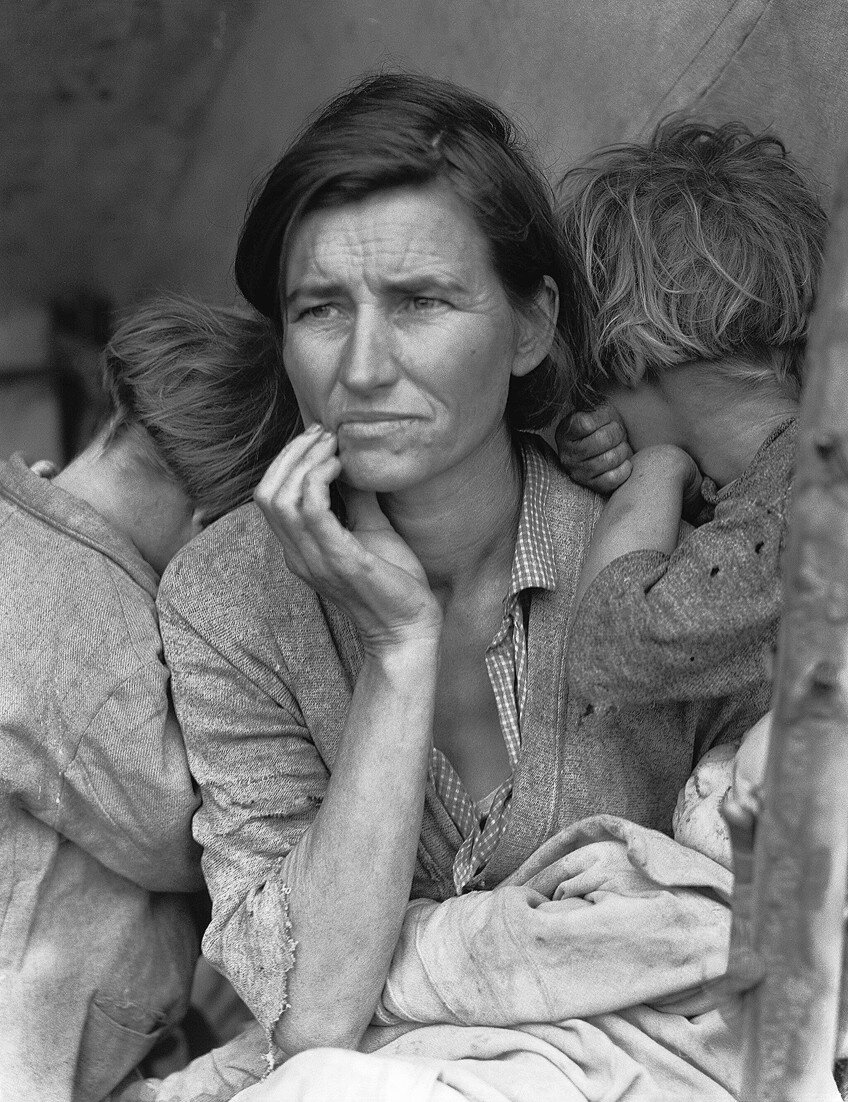
Lange’s work highlighted the anxieties of the families who were forced to leave their homes due to orders from the government and as such, with media censorship, many of her images were unseen during the Second World War. Among some of her best photographs include Human Erosion in California (Migrant Mother) (1936), The Catholic, Lutheran, and Baptist Churches, Great Plains, Dixon, South Dakota (1941), and Six Lettuce Pickers (1965).
Marie Al-Khazen (1899 – 1983)
| Name | Marie Al-Khazen |
| Date of Birth | 1899 |
| Date of Death | 1983 |
| Nationality | Lebanese |
| Associated Movements, Themes, and Styles | Early Modern art, Rural landscapes, and automobile photography |
| Mediums | Photography |
| Famous Artworks | ● Two Women Disguised as Men (c. 1920) |
Marie al-Khazen was a famous Lebanese photographer of the 20th century whose work captures her experience of Northern Lebanon in the 1920s and 1930s. The intimate nature of her work also gives one insight into the female gaze as seen through the images of her close relationships with family members and her travels across Lebanon.
Al-Khazen was an experimental photographer since she also played with performance in her compositions.
Her most famous image, Two Women Disguised as Men, shows a portrait of herself and her sister Alice dressed up as men in Western business suits with a large portrait of their grandfather. The striking image has been ingrained in history for its unique nature and visceral documentation of performing the Western patriarchy through the Lebanese female gaze.
Tsuneko Sasamoto (1914 – 2022)
| Name | Tsuneko Sasamoto |
| Date of Birth | 1 September 1914 |
| Date of Death | 15 August 2022 |
| Nationality | Japanese |
| Associated Movements, Themes, and Styles | Modern art, newspaper illustration, politics, and social issues |
| Mediums | Photography, painting, and illustration |
| Famous Artworks | ● Hyakusai no Finder (2011) ● Inquisitive Girl at 101 (2015) |
Tsuneko Sasamoto was Japan’s first female photojournalist who is also considered one of the best Modernist female photographers in history. Sasamoto’s early interest in the arts started with her passion for painting, after which she worked as a part-time illustrator for a newspaper called Tokyo Nichinichi Shimbun. In 1940, she received a promotion to a probationary employee and thereafter became a member of the Photographic Society in Japan. Among her key influences were artists like Margaret Bourke-White whose photography encouraged Sasamoto to pursue the field.
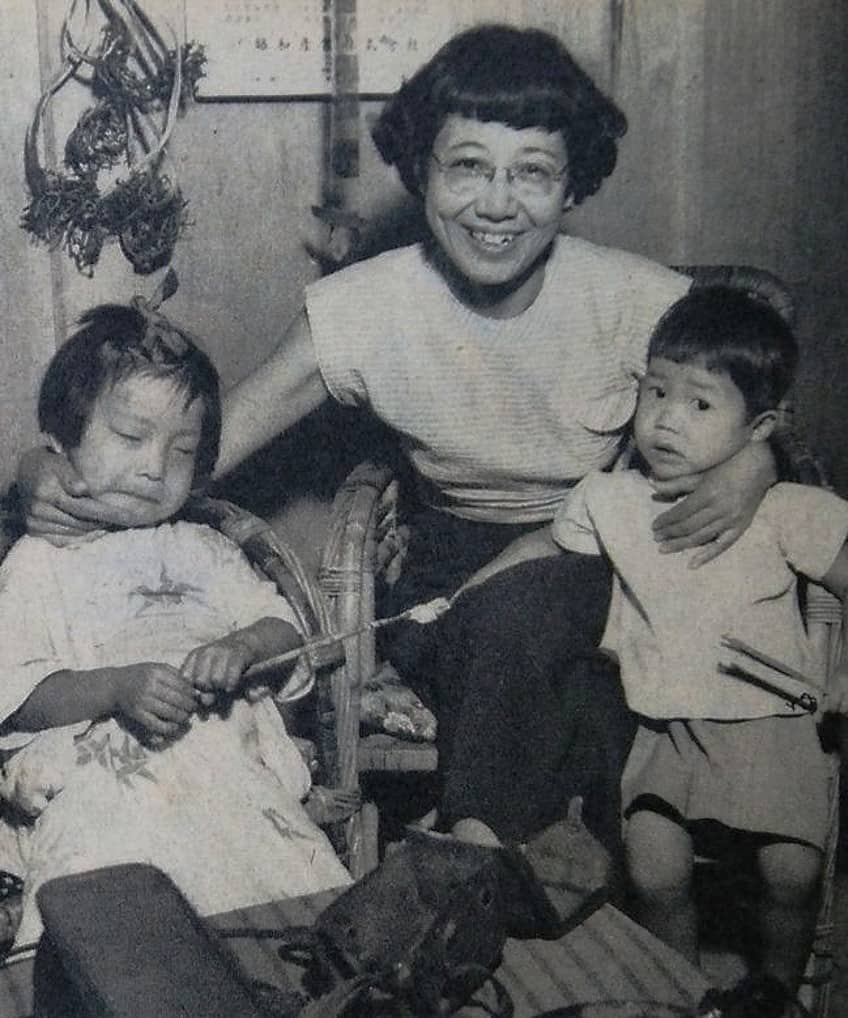
The young artist began photographing various subjects ranging from political military leaders to student protests and other civil strikes that occurred in 20th-century Japan. In 2011, Sasamoto published a photo book called Hyakusai no Finder and exhibited the work in 2014, which was the same year that she turned 100. The following year, in 2015, she published another photobook, Inquisitive Girl at 101, and in the same year, accidentally broke her left hand and both legs, but continued to take pictures. Her last work, Hana Akari, was a project dedicated to her close friend who passed away. Sasamoto herself passed at the age of 107 in 2022.
Diane Arbus (1923 – 1971)
| Name | Diane Arbus |
| Date of Birth | 14 March 1923 |
| Date of Death | 26 July 1971 |
| Nationality | American |
| Associated Movements, Themes, and Styles | Modern art, portraiture, family portraits, identity, New York culture, and representation |
| Mediums | Photography, painting, and drawing |
| Famous Artworks | ● Child with Toy Hand Grenade in Central Park (1962) ● A Puerto Rican Housewife, NYC (1963) ● A flower girl at a wedding, Conn. (1964) ● A Young Man with his Pregnant Wife in Washington Square Park, N.Y.C. (1965) ● Identical Twins, Roselle, New Jersey (1967) |
Diane Arbus was one of the most impactful female photographers of the Modern era who captured the diverse culture of 1950s and 1960s New York through portraiture. Arbus was first introduced to photography through her husband Allan Arbus and later went on to capture the many sights and unique characters of the city. Her subject matter ranged from eerie to simply documentative as a way to remember or perhaps mark the sites that captured her attention.
Arbus also studied under the photographer Lisette Model in the 1950s to develop her practice and thereafter, she began documenting people, buildings, and sites she encountered in New York. By the mid-20th century, Arbus had become an established photographer and was best known for her dedication to capturing the desired image. Acquainted with other professionals such as Walker Evans and Richard Avedon, Arbus also exhibited work at the Museum of Modern Art prior to her suicide in 1971 brought on by her declining mental health and depression. Arbus’ life was remembered in the movie Fur (2006) starring Nicole Kidman.
Graciela Iturbide (1942 – Present)
| Name | Graciela Iturbide |
| Date of Birth | 16 May 1942 |
| Date of Death | Present |
| Nationality | Mexican |
| Associated Movements, Themes, and Styles | Modern art, and Contemporary art |
| Mediums | Photography and film |
| Famous Artworks | ● Desierto de Sonora, México (1979) ● Nuestra Señora de las iguanas, Juchitán, México (1979) ● Cholos (1986) ● Benares, India (1998) ● Chalma, México (2008) |
Influenced by the “decisive moment” proposed by Henri Cartier-Bresson as well as her interest in photo essays and the representation of indigenous cultures, Graciela Iturbide is one of the most celebrated female photographers of the Modern era. Iturbide was born in 1942 to Catholic Mexican parents and was one of 13 children. Her interest in photography was sparked in the 1960s with her initial pursuit of film at the Centro de Estudios Cinematográficos. Iturbide also worked as a studio assistant for Manuel Álvarez Bravo in the 1970s where she further honed her skills.
Iturbide’s focus grew on the documentation of her travels and individual photo essays informed by the “decisive moment” theory, which greatly influenced her style. Iturbide photographed images of different indigenous cultures and received critical acclaim for her work inspired by Juchitán, Oaxaca, which presented images of domestic life and the societal contributions of women.
Annie Leibovitz (1949 – Present)
| Name | Anna-Lou Leibovitz |
| Date of Birth | 2 October 1949 |
| Date of Death | Present |
| Nationality | American |
| Associated Movements, Themes, and Styles | Modern art, Contemporary art, portraiture, and celebrity portraiture |
| Mediums | Photography and painting |
| Famous Artworks | ● Bob Marley photo session for Rolling Stone Magazine (1976) ● Bob Dylan (1977) ● Two Men (1993) |
Annie Leibovitz is considered to be the most popular Contemporary female photographer to date with her best-known work on the portrait of Yoko Ono and John Lennon, which was taken only hours before Lennon’s murder. Leibovitz’s artistic practice revolves around celebrity portraiture, including intimate compositions and commissioned work for various fashion literature giants. The artist studied at the San Francisco Art Institute and was first introduced to the arts early in her childhood through her mother who was a professional Modern dance instructor.
After studying painting to become an educator, Leibovitz’s inspiration was sparked by her first workshop in photography where she discovered the work of Henri Cartier-Bresson, Robert Frank, and later Margaret Bourke-White.
Leibovitz preferred camera was the Mamiya RZ67, including various other professional digital and manual-focus SLR cameras. Among the many famous figures who were photographed by Leibovitz include the Rolling Stones, Serena Williams, Queen Elizabeth II, LeBron James, and Miley Cyrus.

Leibovitz was also speculated to have shared a close relationship with the philosopher and art essayist Susan Sontag. Some of Leibovitz’s best photographs include Bob Marley: Legend (1976), John Lennon and Yoko Ono (1980), Paloma Picasso, Paris, France (1982), Whoopi Goldberg, Berkeley, California (1984), and Mikhail Baryshnikov (1990).
Rita Ostrovska (1953 – Present)
| Name | Rita Ostrovska |
| Date of Birth | 1953 |
| Date of Death | Present |
| Nationality | Ukrainian |
| Associated Movements, Themes, and Styles | Modern art, Contemporary art, Jewish identity, and corporeality |
| Mediums | Photography, graphic art, and ceramic sculpture |
| Famous Artworks | ● Sale (1983) ● Secretary Larysa Pavlivna (1987) ● Propaganda (1988) ● Hall of Fame (1988) ● Lenin For Choice (1988) ● Juden in der Ukraine, Schtetls (1989 – 1994) |
Rita Ostrovska is one of the most talented Ukrainian photographers of Contemporary photography. Ostrovska was born in Kyiv in 1953 and joined the Palace of Pioneers’ photographic club as a teenager, exploring the waters of photography. She also studied at the Saint Petersburg State Institute of Film and Television and was also employed as a photographer and artist at the Kyiv Planetarium before managing the Mgnoveniya photographic studio situated at the Municipal Station of Young Technicians and Arsenal Plant in the 1980s.
In 1993, Ostrovska was awarded the Photographer of the Year at the Moscow First International Photo Festival and then took up a fellowship under the ArtsLink Program.
It was her trip to the United States that sparked her photographic practice in photographing Jewish emigrants, which won her the Albert Renger-Patzsch Prize in 1994. Ostrovska’s practice further evolved to explore Jewish identity from multiple points of view, which strengthened her connection and relationship to her environment. Additionally, Ostrovska also explored the concept of corporeality as a tool for “manifesting human relations”. Among her best series are works such as Mundane Life (c. 1988) and Jewish Streets of Ukraine (c. 1990s).
Nan Goldin (1953 – Present)
| Name | Nancy Goldin |
| Date of Birth | 12 September 1953 |
| Date of Death | Present |
| Nationality | American |
| Associated Movements, Themes, and Styles | Modern art, Contemporary art, LGBT subcultures, intimacy, HIV/AIDS, and the opioid crisis |
| Mediums | Photography |
| Famous Artworks | ● Bea with a whip at The Other Side (1973) ● The Hug, NYC (1980) ● Rise and Monty Kissing, New York City (1980) ● Nan and Brian in Bed, New York City (1983) ● Self-Portrait in Kimono with Brian (1983) ● Jimmy Paulette & Misty in a Taxi, NYC (1991) |
Nan Goldin is one of the most famous women photographers of all time whose works on LGBT communities, intimacy, sexuality, the HIV/AIDS crisis, and other nostalgic events of Modern bohemian life left a huge impact on the world of artistic photography. Her style displays a sense of lyricism and poetic empathy for her relationship and experience of her environment and close friendships.
Goldin’s most famous series, The Ballad of Sexual Dependency presents a 700-image slideshow of her personal life in the 1970s and 1980s in New York. Her style is encapsulated as diaristic and personal yet close to the world of experiences and circles impacted by major social movements and issues in late modern and Contemporary America. Goldin also founded the Prescription Addiction Intervention Now organization (P.A.I.N) in 2017 to push her support for holding the Sackler family accountable for their contribution to the Opioid crisis.
Cindy Sherman (1954 – Present)
| Artist Name | Cynthia Morris Sherman |
| Date of Birth | 19 January 1954 |
| Date of Death | Present |
| Nationality | American |
| Associated Movements, Themes, and Styles | Contemporary art, late-Modern American art, social criticism, self-portraiture, identity politics, artificial gender roles, cinematic stereotypes, gender, and celebrity portraiture |
| Mediums | Photography and film |
| Famous Artworks | ● Untitled Film Still #11 (1978) ● Untitled Film Still #18 (1978) ● Untitled (Marilyn) (1982) ● Untitled 184 (1988) ● Untitled #408 (2002) |
Contemporary female photographer Cindy Sherman is one of the most iconic feminist photographers to date whose exploration of artificial femme identities, identity, and cinematic stereotypes of the 1970s transformed the 21st-century view of women and highlighted the danger of the male gaze.
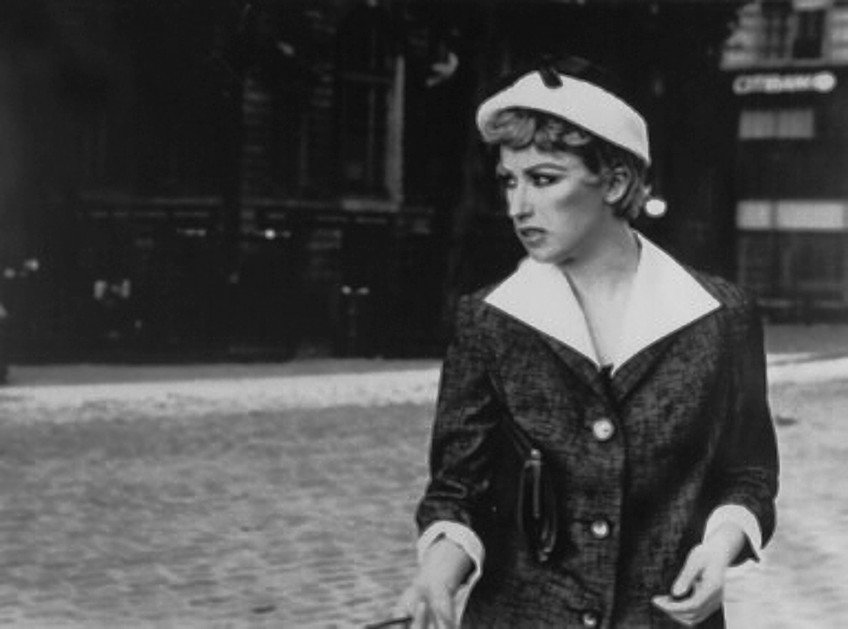
Sherman is most famous for her series of film stills, which criticize the media for the representation of women as popular performative tropes. The American photographer places herself in different scenarios and characters and captures stills of her self-portraits as seen in her seminal series Untitled Film Stills (1977-1980). Among the themes discussed in her work include her critique of identity and gender roles as well as sexual domination, mass deception, and the construction of self-identity.
Pamela Hanson (1954 – Present)
| Name | Pamela Hanson |
| Date of Birth | 1954 |
| Date of Death | Present |
| Nationality | American |
| Associated Movements, Themes, and Styles | Contemporary art, fashion photography |
| Mediums | Photography |
| Famous Artworks | ● Catherine Deneuve (1989) ● CZ Guest (1990) ● Kate Moss (Paris) (1992) ● Smoker (Spanish Vogue) (1993) ● Carolyn Murphy (Elle) (1995) ● Cherries (2017) ● East Hampton (2021) |
Pamela Hanson is among the top global female photographers in the world with over 30 years of expertise in the fashion industry. Hanson’s photographic style is varied and demonstrates a fine-tuned eye for classical beauty, Romantic still-life imagery, and personal diarized accounts from her lived experiences. Her works have been featured in many major fashion publications, including Elle, Vanity Fair, GQ, and Vogue among many others with special clients such as Victoria’s Secret, Polo Ralph Lauren, Reebok, Sunday Times, and Estée Lauder.
Hanson’s works have also been acquired by the Smithsonian American Art Museum, which also reflects the artist’s female gaze and eye for classic cinema in the in-between lives of fashion icons. Hanson’s most famous series was a +200-page photo album released in 2001 called Girls, which contained many professional black and white images and went on to be incredibly successful. Her Contemporary works created between 2012 and 2014 belong to a series called Private Room, which was released in 2017 as a tribute to the beauty and confidence of women.
Pamela Singh (1961 – Present)
| Name | Pamela Chaudry Singh |
| Date of Birth | 1961 |
| Date of Death | Present |
| Nationality | Indian |
| Associated Movements, Themes, and Styles | Contemporary art and post-war art |
| Mediums | Photography |
| Famous Artworks | ● Tantric Self-Portrait in Jaipur #4 (2000 – 2001) ● Tantric Self-Portrait in Jaipur #18 (2000 – 2001) ● Jaipur Self-Portrait No. 2 (2003) |
Among the many women photographers around the world, Pamela Singh is one of the most publicized photographers through association with her former identity as Pamela Bordes and her affiliation with arms dealers, and a complicated sex scandal of the 1980s. Singh is currently a photojournalist who studied at the Parson School of Design as well as the International Center for Photography. Singh’s work is often overshadowed by the many hot-opinionated male critics regarding her early sex work career, however, her work as a female photographer acts as a personal journal of her exploration of spirituality and self.
Singh’s passion for documentary photography fueled her artistic photography with her most famous work being her Tantric Self Portraits (2000 – 2001), which garnered critical acclaim from the New York Times.
Her series of self-portraits was described as displaying her Contemporary awareness through humor and the symbolism of tantra. Additionally, her work was also exhibited in India: A Celebration of Independence show and later a Ford-sponsored exhibition, Black and White: What has Independence Meant for Women? By the 1990s, Singh also worked on a two-year project where she shot images of Buddhist and Hindu temples to explore spirituality and inserted herself across the landscapes of “old world cities”. Singh thus blurred the lines between the past, Modern, and Contemporary through her self-representation and colorful religious narratives. Her works can be found in collections such as The Daimler Contemporary, The Royal Ontario Museum, The Sackler Freer Museums, and numerous other private collections.
Lynsey Addario (1973 – Present)
| Name | Lynsey Addario |
| Date of Birth | 13 November 1973 |
| Date of Death | Present |
| Nationality | American |
| Associated Movements, Themes, and Styles | Contemporary art, documentative photography, photojournalism, conflict, and human rights |
| Mediums | Photography |
| Famous Artworks | ● Of Love And War (2008) |
First and foremost a photojournalist, American photographer Lynsey Addario is one of the most famous female photographers of the 21st century whose works capture the human rights issues of people across the Middle East and African countries. Addario is incredibly driven and passionate about her purpose and career and was elected as one of the top five photographers of the last decade by American Photo Magazine in 2015. The importance of photographers capturing the world as it stands is one of the most essential missions since images hold the power to transform the way that we read and interpret the world and its key events.
Images are therefore currency to our dissemination and consumption of information from around the world.
Addario has collaborated with various organizations and media giants on different assignments around the globe, including The New York Times and National Geographic. Addario was also on the winning team for the Pulitzer prize as part of the New York Times for her work on reporting from Afghanistan and Pakistan.
Not only is Addario one of the most notable female photographers of the century, but she is also not one to shy away from danger after being kidnapped twice. Addario’s photography can be described as compelling narratives curated from everyday reality, which exposes the issues and effects of human conflict on all people. Addario is yet another example of how women in the art test not only the boundary of their medium and relationship to it but also their practice and its impact on the real world.
Chen Lingyang (1975 – Present)
| Name | Chen Lingyang |
| Date of Birth | 1975 |
| Date of Death | Present |
| Nationality | Chinese |
| Associated Movements, Themes, and Styles | Contemporary art |
| Mediums | Photography, painting, and installation |
| Famous Artworks | ● Twelve Flower Months (1999 – 2000) ● The First Month: Narcissus (1999 – 2000) ● The Second Month: Magnolia (1999 – 2000) ● The Third Month: Peach (1999 – 2000) |
Chen Lingyang is a famous Contemporary Chinese female photographer who combines the mediums of photography and installation to create a unique symbolic composition that celebrates femininity from a 1990s Chinese diasporic point of view.
Lingyang uses her body as a site for the study of the passage of time and a capsule of intimate histories.
Her most famous series Twelve Flower Months (1999-2000) presents a collective experience based on the artist’s personal experience as a woman in China through the documentation of menstruation and mirrored images. Chen retired from her art practice in 2005 but her works will always remain powerful symbols of the feminine experience.
These amazing multi-talented feminist photographers, social photojournalists, and documentary diarist image producers have left a significant impact on the field of photography. In capturing the world through the female gaze and exploring broader views of the personal lives of others around them, these incredible women photographers continue to inspire many aspiring female photography practitioners and others interested in the many imaginative ways that one can make an impact on society through art. We hope that this article will leave you motivated to explore the world of photography, and that you slow down now and then to not only seize the moment, but to capture it!
Frequently Asked Questions
Who Is the Most Popular Contemporary Female Photographer?
The most popular Contemporary female photographer is considered to be Annie Leibovitz, who is an American photographer and visual artist who produced many iconic portraits of celebrities, and is ranked as one of the highest-paid photographers to date.
Who Are the First Female Photographers?
The first female photographers are considered to be Sarah Anne Bright and Anna Atkins, who each engaged in early English photographic processes for different purposes. Other early female photographers include Julia Margaret Cameron, Christina Broom, Imogen Cunningham, and Gertrude Käsebier, among a few of the many famous 19th-century female photographers.
What Is the Most Expensive Photograph Created by a Female Photographer?
The most expensive photograph created by a female photographer is ranked as the fourth most expensive image and is titled Doge (2005). The photograph was created by Atsuko Satō and sold for $4 million in 2021. Following this, the next most expensive photograph shot by a female photographer is Untitled #96 (1981), which sold for $3.8 million in 2011 and was shot by Cindy Sherman.
Jordan Anthony is a Cape Town-based film photographer, curator, and arts writer. She holds a Bachelor of Art in Fine Arts from the University of the Witwatersrand, Johannesburg, where she explored themes like healing, identity, dreams, and intuitive creation in her Contemporary art practice. Jordan has collaborated with various local art institutions, including the KZNSA Gallery in Durban, the Turbine Art Fair, and the Wits Art Museum. Her photography focuses on abstract color manipulations, portraiture, candid shots, and urban landscapes. She’s intrigued by philosophy, memory, and esotericism, drawing inspiration from Surrealism, Fluxus, and ancient civilizations, as well as childhood influences and found objects. Jordan is working for artfilemagazine since 2022 and writes blog posts about art history and photography.
Learn more about Jordan Anthony and about us.
Cite this Article
Jordan, Anthony, “Famous Female Photographers – Shattering Glass Ceilings.” artfilemagazine – Your Online Art Source. October 19, 2023. URL: https://artfilemagazine.com/famous-female-photographers/
Anthony, J. (2023, 19 October). Famous Female Photographers – Shattering Glass Ceilings. artfilemagazine – Your Online Art Source. https://artfilemagazine.com/famous-female-photographers/
Anthony, Jordan. “Famous Female Photographers – Shattering Glass Ceilings.” artfilemagazine – Your Online Art Source, October 19, 2023. https://artfilemagazine.com/famous-female-photographers/.



